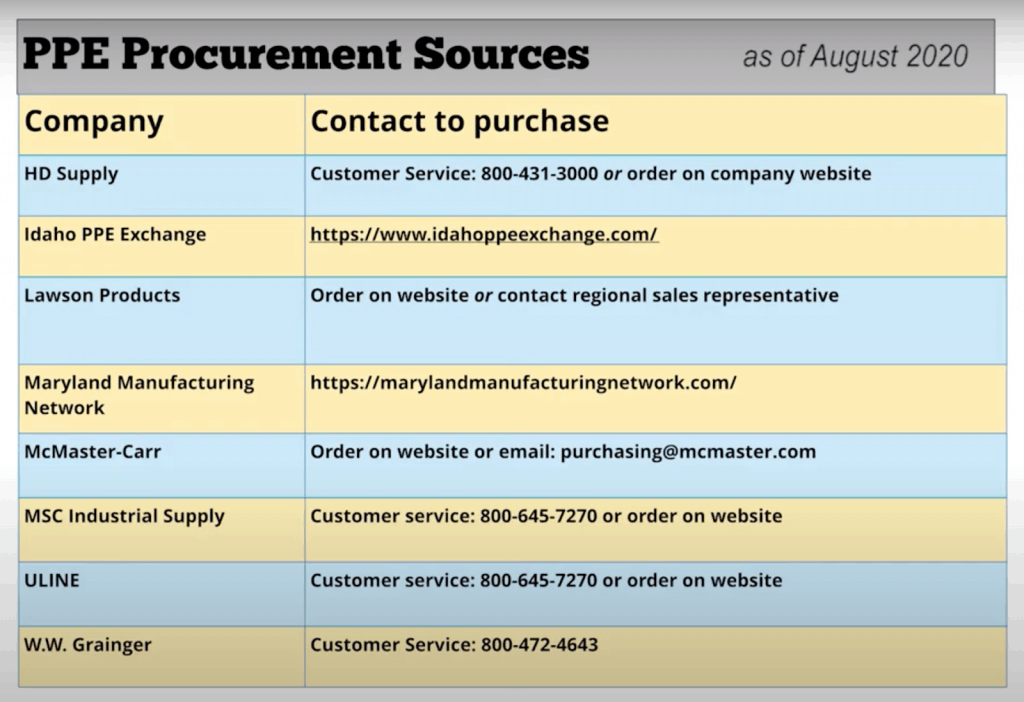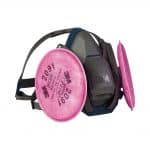
Pictured: Particulate Filter P100 Respirator
MARCH 2020
Can’t find your respirators?
*Note: Respirators differ from surgical and cloth face masks. To find the latest information about face masks, visit our COVID-19 Q&A page.
What are respirators? How do they differ from cloth and surgical face masks?
According to the National Institute for Occupational Safety and Health (NIOSH), respirators protect wearers by filtering out specific hazards in the air. Other types of respirators deliver clean air to the wearer. Respirators extend over the nose, mouth, and sometimes the full head.
Face masks, on the other hand, capture what is exhaled from a person, limiting others’ chances of getting sick. They extend over the nose and mouth. Face masks are strongly recommended, and in some states required, when out in public. Surgical masks do the same, and they have the added benefit of stopping liquids, such as blood, from touching a person’s face.
What jobs are respirators important for on the farm?
Respiratory protection should match the job. Use a worksheet or chart to determine protection:
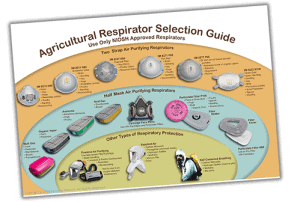
NIOSH Approved Respirator Chart
Learn about the different types of NIOSH Approved Respiratory protectors
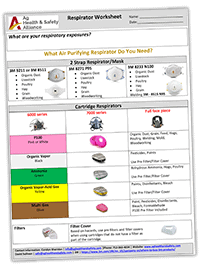
Ag Health & Safety Alliance Respirator Worksheet
Learn about the different types of NIOSH Approved Respiratory protectors
Why is there a shortage of respiratory protection?
The COVID-19 pandemic has led to a high demand for N95 respirators that are critical to protecting patients and medical staff to prevent the spread of COVID-19. Because of the high demand and national shortage of these critical respirators, their use is prioritized for healthcare professionals and activities labelled as “essential” requiring respiratory protection.
What alternative options to respirators are there?
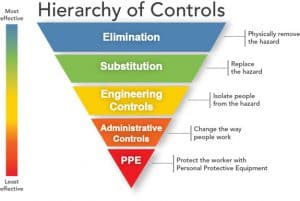 When thinking through alternative options, it is helpful to use the Hierarchy of Controls pyramid.
When thinking through alternative options, it is helpful to use the Hierarchy of Controls pyramid.
This resource may help when thinking of effective alternative options.
- Elimination: can you eliminate or remove the hazard that requires the use of respiratory protection?
- Substitution: can you replace the hazard with something less hazardous that requires the use of less respiratory protective equipment?
- Engineering controls: can you engineer methods such as improving and maintaining ventilation systems that reduce the requirement for respiratory protective equipment?
- Administrative controls: can you change the way people work by altering the work or jobs to reduce the number of people exposed to respiratory hazards and requiring the use of PPE?
- PPE: finally after reviewing the four previous controls, workers should be protected with PPE. When N95 are required for a job but not available consider using others that provide greater respiratory protection. Other types of acceptable respirators include: a R/P95, N/R/P99, or N/R/P100 filtering facepiece respirator; an air-purifying elastomeric (e.g., half-face or full-face) respirator with appropriate filters or cartridges; powered air purifying respirator (PAPR) with high-efficiency particulate arrestance (HEPA) filter; or supplied air respirator (SAR).
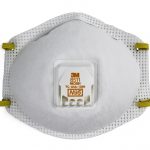
Pictured: N95 Respirator
TIPS:
- Using what is available on your farm.
- Increase the level of protection to respirators that are in stock, such as P100s
- Alter timeline of work/jobs
- Increase ventilation
How do I care for my respirators?
- Ideally, N95 respirators should be discarded after each use. However, in the event extended use or reuse of N95s become necessary, the same worker is permitted to extend use of or reuse the respirator. The can be reused if it maintains its structural and functional integrity (e.g., no broken nose pieces or straps), it passes a fit test, and the filter material is not physically damaged, soiled, or contaminated (e.g., with blood, oil, paint). Decontamination methods are not recommended, as they may reduce the functional integrity of the respirator, and such methods depend on the manufacturer and make of the respirator. OSHA Enforcement Guidance on Respiratory Protection Shortage
- Workers should be trained on how to check for structural and functional integrity and if a successful seal can be maintained before reuse. Seal Check Video
- Storage – Examine respirator to see if it is visibly contaminated or distorted. If the respirator is visually intact, carefully store it to avoid destroying the shape and consistency of the mask. The respirator should be stored in a well-ventilated container (i.e., paper bag with handles) for a minimum of five days with user name & date.
- Wash your hands or use a hand sanitizer with at least 60% alcohol after taking off (doffing) your respirator.
How do I complete fit testing?
Fit testing supplies are in short supply. If it is not possible to meet the requirements for a full fit test, ensure that you are at least performing your own fit test.
N95 Respirator Toolkit
Respirator Toolkit for Agriculture
Created with the support of AgriSafe, Central States Center for Agricultural Safety and Health (CS CASH), and Ag Safety and Health Alliance

Pictured: N95 Respirator
Recent developments in the COVID 19 pandemic have led to a high demand for N95 respirators, or NIOSH-Approved N95 particulate filtering respirators.
Farmers and agricultural workers also need respiratory protection for many jobs on the farm – such as working around grain, hogs, hay, or solid pesticides. Health care professionals depend on this same respiratory protection to protect themselves from exposures in their environment.
As farmers continue to move grain, gear up for spring planting, and work with livestock, respiratory protection remains a top priority.
Get appropriate protection now!
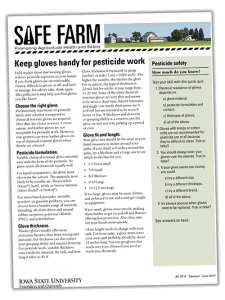 Keep Gloves Handy for Pesticide Work
Keep Gloves Handy for Pesticide Work
Field studies show that wearing gloves reduces pesticide exposure on your hands.
This publication may help you find gloves that fit and will be comfortable while working.

